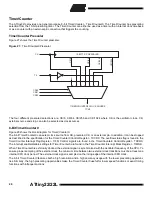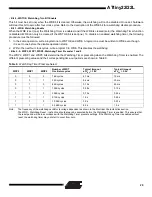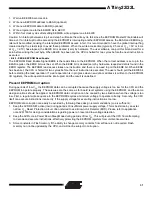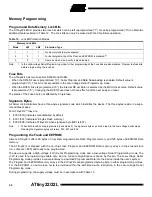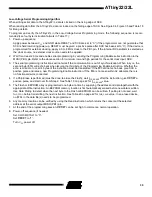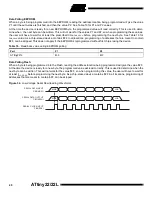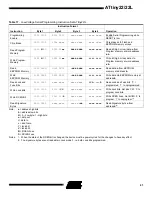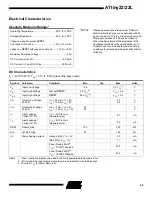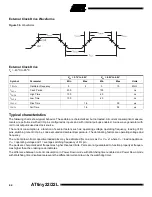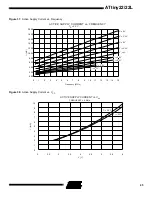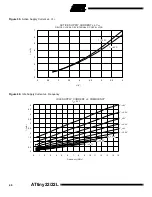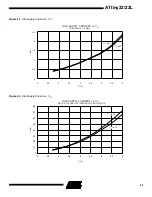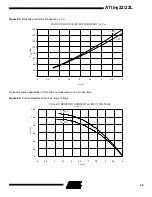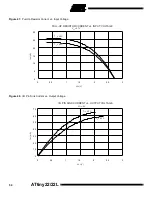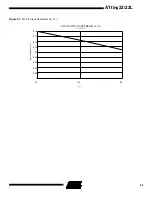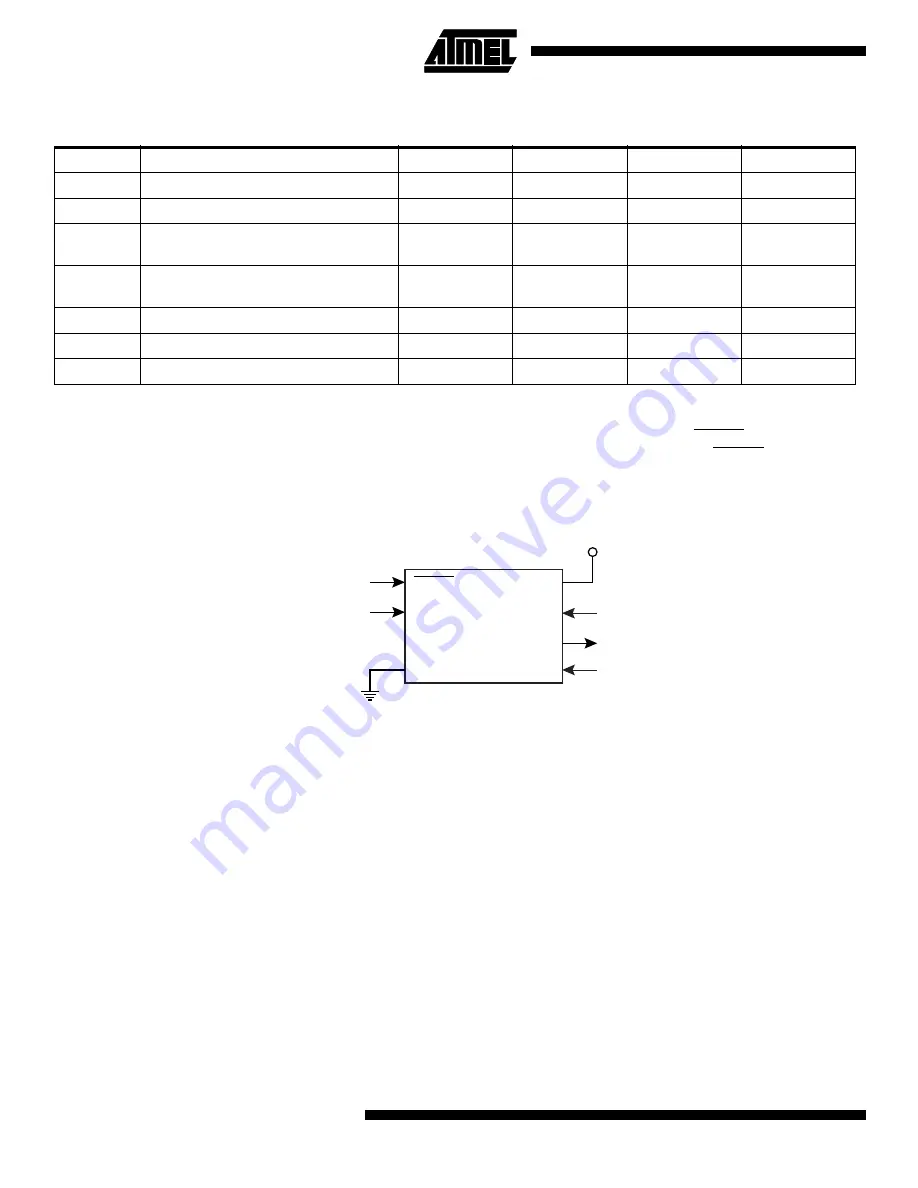
ATtiny22/22L
38
Low-Voltage Serial Downloading
Both the Program and Data memory arrays can be programmed using the serial SPI bus while RESET is pulled to GND.
The serial interface consists of pins SCK, MOSI (input) and MISO (output), see Figure 33. After RESET is set low, the
Programming Enable instruction needs to be executed first before program/erase instructions can be executed.
Figure 33. Low-voltage Serial Programming and Verify
For the EEPROM, an auto-erase cycle is provided within the self-timed write instruction and there is no need to first exe-
cute the Chip Erase instruction. The Chip Erase instruction turns the content of every memory location in both the Program
and EEPROM arrays into $FF.
The Program and EEPROM memory arrays have separate address spaces, $0000 to $03FF for Flash Program memory
and $000 to $07F for EEPROM Data memory.
Either an external clock is applied to the XTAL1/PB3 pin or the device must be clocked from the internal RC-oscillator. The
minimum low and high periods for the serial clock (SCK) input are defined as follows:
Low: > 2 MCU clock cycles
High: > 2 MCU clock cycles
Table 15. High-Voltage Serial Programming Characteristics
T
A
= 25
°
C ± 10%, V
CC
= 5.0V ± 10% (Unless otherwise noted)
Symbol
Parameter
Min
Typ
Max
Units
t
SHSL
SCI (PB3) Pulse Width High
100
ns
t
SLSH
SCI (PB3) Pulse Width Low
100
ns
t
IVSH
SDI (PB0), SII (PB1) Valid to SCI (PB3)
High
50
ns
t
SHIX
SDI (PB0), SII (PB1) Hold after SCI
(PB3) High
50
ns
t
SHOV
SCI (PB3) High to SDO (PB2) Valid
10
16
32
ns
t
WLWH_CE
Wait after Instr.3 for Chip Erase
5
10
15
ms
t
WLWH_PFB
Wait after Instr.3 for Write Fuse Bits
1.0
1.5
1.8
ms
RESET
XTAL1/PB3
GND
VCC
PB2
PB1
PB0
SCK
MISO
MOSI
CLOCK INPUT
2.7 - 6.0V
ATtiny22/L
GND



